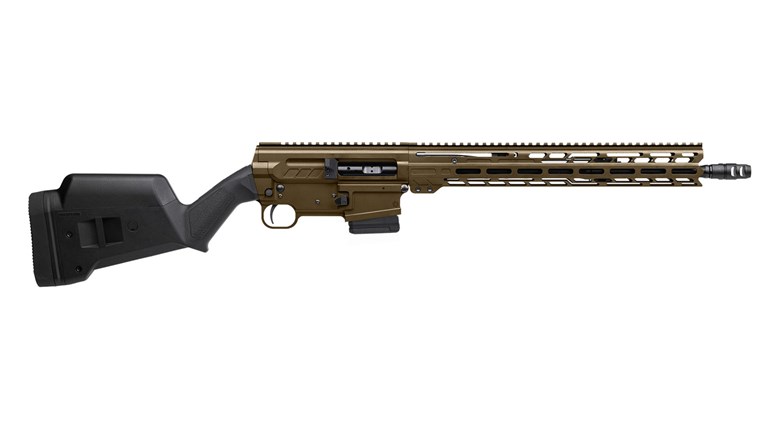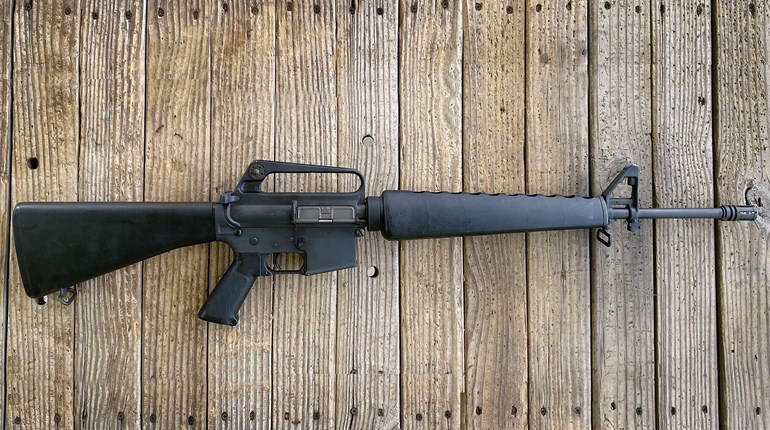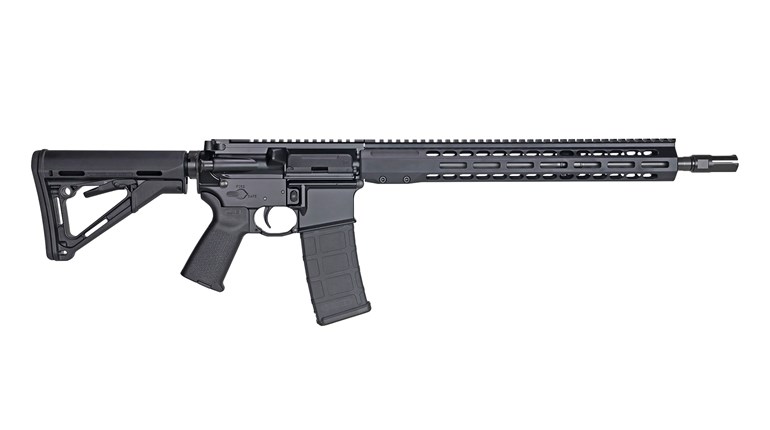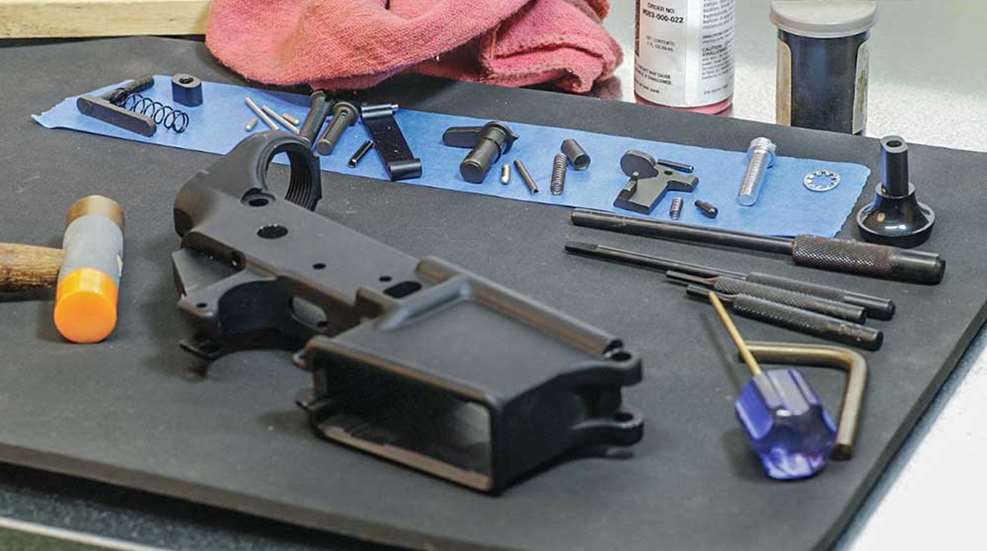
When I was getting in all the pieces for the project gun builds for a new book, there were a lot of boxes. In the course of unboxing and then organizing the collections into their own plastic bins, I would hold up each part and describe it to a son with respect to its utility and, since it almost always applied, why I chose it and how it was better and how it was made and what it was made of, and then my son stopped me: DAD. You don’t really like guns. You like PARTS!
And he caught me. I guess that’s true. That, however, and with no doubt at all, is why I specifically like AR-15s. They are the sum of their parts, and those parts can be truly captivating.
Parts to Whole
Epic understatement: there’s been an explosive upsurge in interest in the do-it-yourself building of AR-platform guns. Honestly, there’s not been another phenomenon similar in the firearms world.
The only things similar in other worlds (ones I know) are higher-end mountain bikes. These are a collection of parts, all of which can be self-selected. Each component exists with options, all at varying levels of trickery and expense (related), and functional utility. Pedals, grips, sprockets, suspension, seat posts, and on and on and on, are available in so many optional states, and even down to my red tire-valve caps. Yes. That makes a difference! Well, it does to my sense of joy with that bicycle when I unrack it. Serious mountain bikers start with a frame, kind of like how AR-DIY folks start with a receiver set.
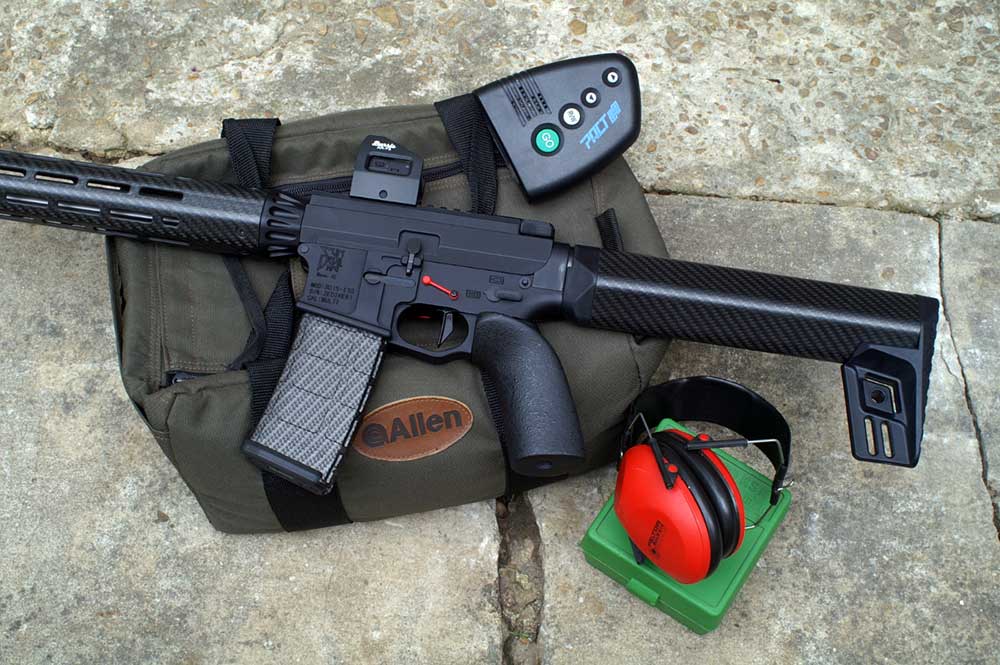
The best thing about building your own AR, or rebuilding it, is that you get to choose the components you want. I know I already said that pretty clearly, but there’s more of importance in that simple concept. Why anyone wants whichever component, and what is wanted, is as individual as is the end result—and the motivation behind it. You might want to save money, which you can, or you might want to blow it out and build your ultimate. Even though, even then, in my way of looking at it, you’re still saving money because you’re getting what you want and only what you want. Don’t spend the same dollar twice! Get what you want to start and there’s no waste in the form of replaced and then shelved parts.
Now, it isn't like factory-built AR-15s ought to be avoided. Not at all. There are outstanding AR-platform firearms ready to go, and way on more now that ever. The main deal there is (and this is where I hit snags) there’s usually something, or some things, that I want done differently. Fairly comparing overall construction levels, those tagged, bagged and boxed guns also tend to cost more than the component-built option. In the end, what you're paying for is convenience and, in the cases of higher-end guns, a level of quality-control.
Getting Started
You don’t have to be a certified gunsmith to successfully build up a fully-functioning AR. You need some tools and some know-how. Insight, and making insightful choices, comes with experience.
Folks, it’s not an old saying without reason: Get the right tools for the job. That holds for plumbing, auto repairs, and building AR-15s. That, however, and to widely varying degrees, detracts from the “save money” draw. But it might also be why most I know tend to keep adding to their collections. Once the tools are in place, just keep going—after one success, there’s often a craving for another.
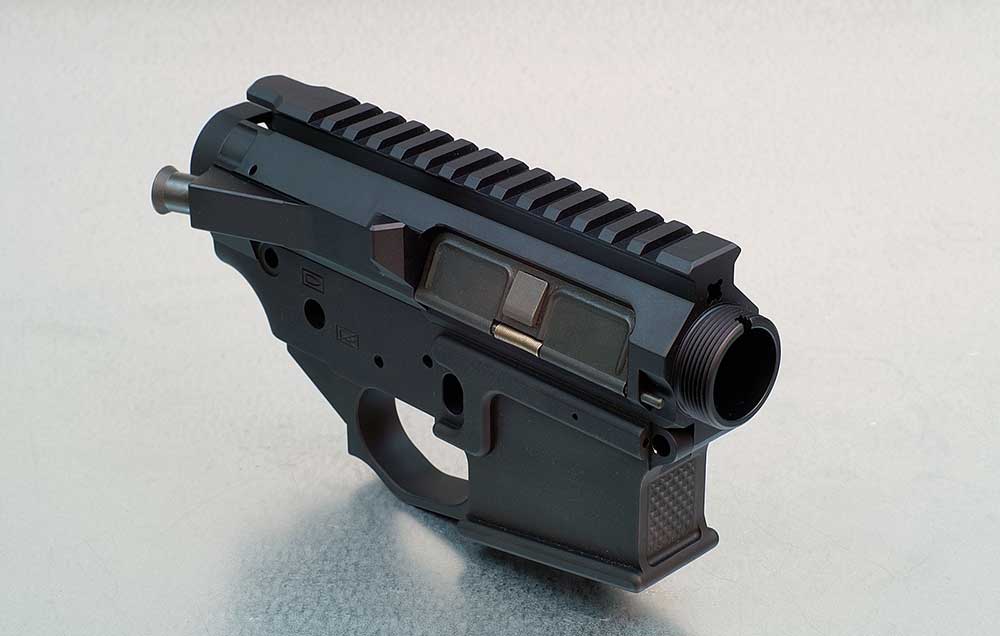
It’s been getting better, which means getting easier. Over the years I’ve been building, I’ve seen the better component manufacturers go outside the box in developing proprietary designs and many changes make their parts easier to correctly install. Free-floating handguard systems in particular, the good ones at least, have become more straightforward.
What was once custom is now common, or at least commonly available. Barrels are gladly on that list! It’s possible to get a high-quality barrel with all the “custom” options ready to snug down on an equally “custom” upper receiver.
Of the ballpark 100 parts (depending on configuration) that can make up an AR-15, there’s scarcely a one that’s not been tweaked, re-engineered, re-made—somehow changed—and many much improved. Options! There are also a whopping lot more component manufacturers.
The level of completeness, which is the best word I know to describe the current state of options, has come about due to good old consumerism: We want it, they make it, we buy it. All good. We, DIY builders, drove all that. I think that what drives DIY builders is having all those options!
Origins of the DIY AR-15
Backing up a ton: The whole reason we can build up an AR-15 is made possible by its essential engineered design. The pieces, including all major system components, are all modular. As long as the parts are dimensionally USGI-standard, they swap: they can be different and differently made, as long as they’re the right size-specs. There are no machine-shop operations for us to do. The “barrel-extension” design, now popular in some bolt-action platforms, means that the ready-made barrel is a slip-fit into the upper receiver and secured by a threaded collar. The separate upper and lower receiver assemblies attach together via pins. Tops and bottoms interchange. A “new gun” can be another upper assembly. The legal “firearm” part is the stripped lower receiver; all other parts can ship to your door in separate boxes. Wrenches and roll-pin punches, a sturdy vise, plus a few specialty hand-tools, assemble the parts into a whole.
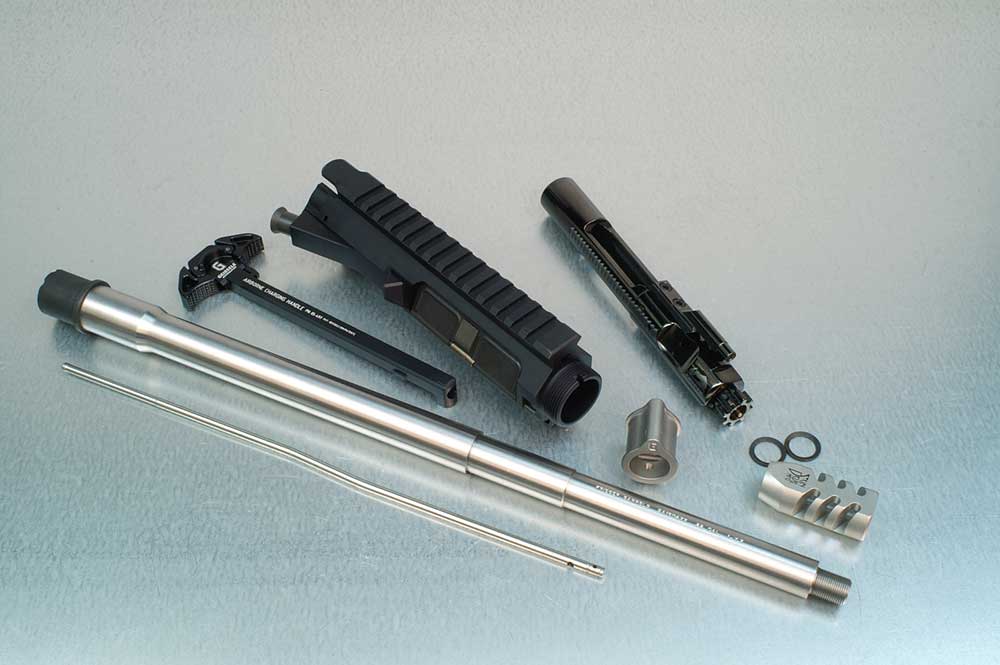
In my view, this was all made possible some 30 years ago. The federal government exercised a contract clause that said products designed for the military include the intellectual property rights (the design itself) and, therefore, become public domain. Colt’s Manufacturing lost its contract to produce the M16 in 1988 and the first commercial “clone” (Eagle Arms) showed up a year later. And that (plus time-attrition in patent expirations) is ultimately how Colt lost its exclusive on commercial AR-15 production, although the company legally still owns the “AR-15” trademark (if you’ve wondered why those variously available now are “Something-Else-15,” there you go). So, Department of Defense owns the blueprints and a whopping lot of manufacturers have them.
Objective Subjectivity
Another one of the reasons you’re doing anything yourself is so you can do it better, or you sure plan to. Details! Better, a part of it at least, means prepping the parts (deburring, polishing and so on) and also lubing parts as they are installed. I’ve pulled corroded detents from factory guns.
But, still, is what I build for myself really better than what “they” build for us all? When I used to need a gun that “really mattered,” like a match rifle, I would get all the parts I wanted together (that I could) and then send them all off, along with a barrel blank, to a custom builder who finished the work, including adding custom-made pieces I couldn’t otherwise get. As touched upon, now I’m able to do it all myself because all the parts are all available to me, and many produced by the same folks I used to build my guns.
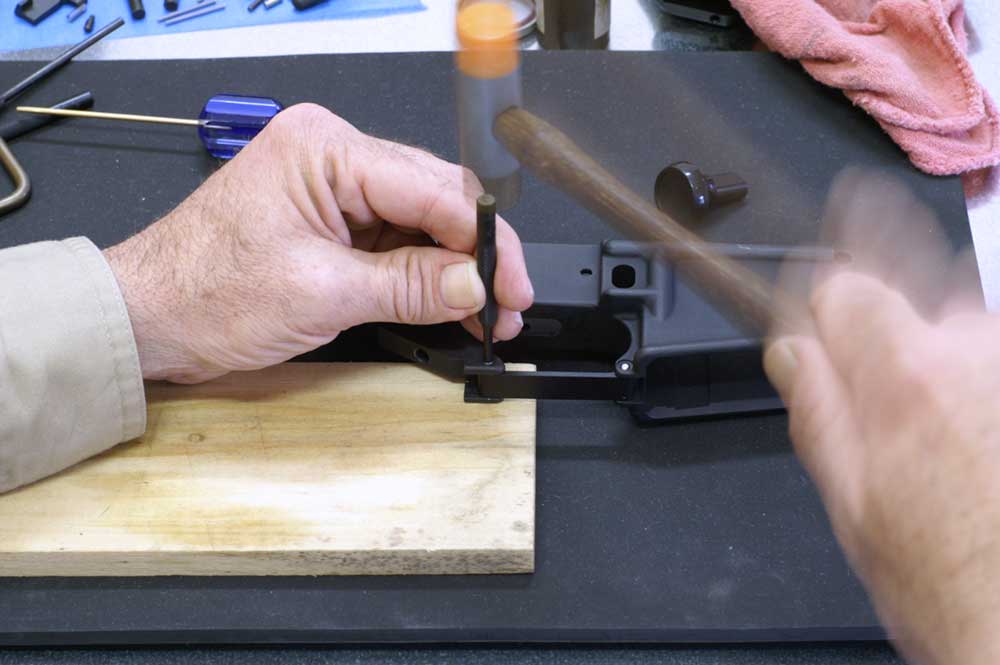
Beyond, or at least aside from, a specialized project/need like that, it still is subjective. A carbine I use to blast tin cans? That one doesn’t have a high-end barrel, or half-MOA accuracy, but still has the parts I like, and some were chosen for the sake of “value” (also subjective). It decidedly is “as good as” a routine factory gun. Define “good.” Define “better.” It’s a little bit of a chicken/egg question: what came first, the need or the want? Would I miss its self-selected details were they not there? Maybe not, probably not. But they could be there, can be there, and that’s the essence of it, right there.
I’m not saying to build. I’m not saying not to build. Said before: it’s a commitment-investment in expense and effort, and the reward may only be subjective (or not). Me? Yes. I don’t play music and I don’t do artwork. This has become my expression of the closest thing to personal perfection I produce. It’s gone way on beyond the want of a gun.
Glen Zediker is a longtime contributor to NRA Publications. He is a High-Master NRA High Power Rifle competitor and earned that distinction using an AR-15 Service Rifle. Glen also owns Zediker Publishing, a company that provides books and information with a focus on AR-platform firearms and handloading. The preceding is a specially-adapted excerpt from his latest book, "America’s Gun: The Practical AR-15." Visit ZedikerPublishing.com or BuyZedikerBooks.com for more.













